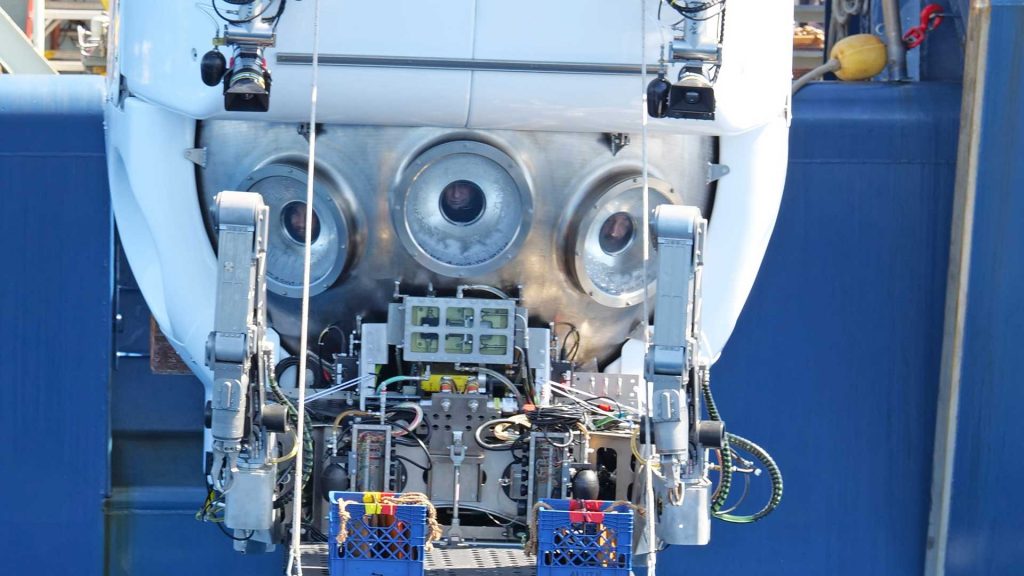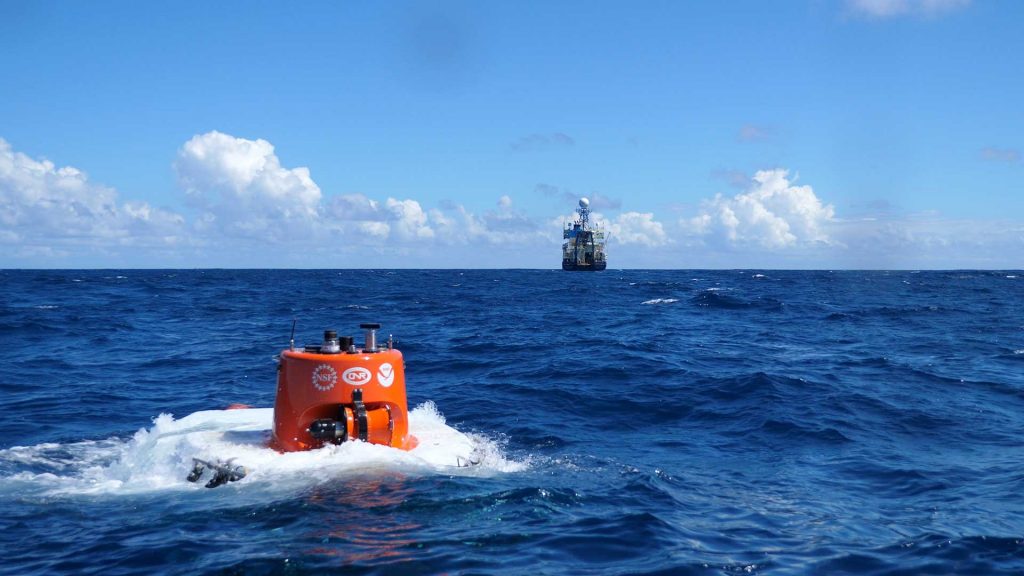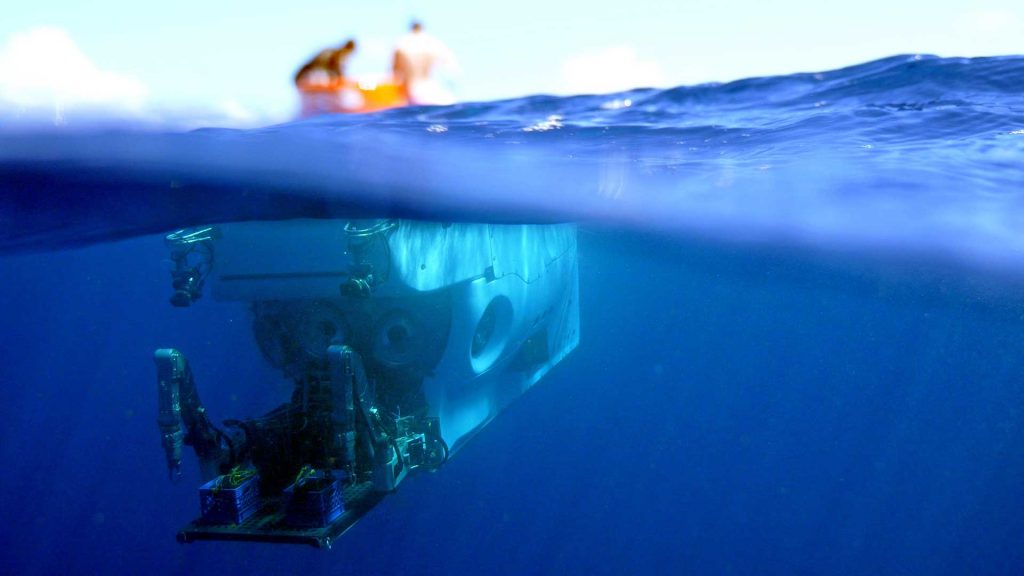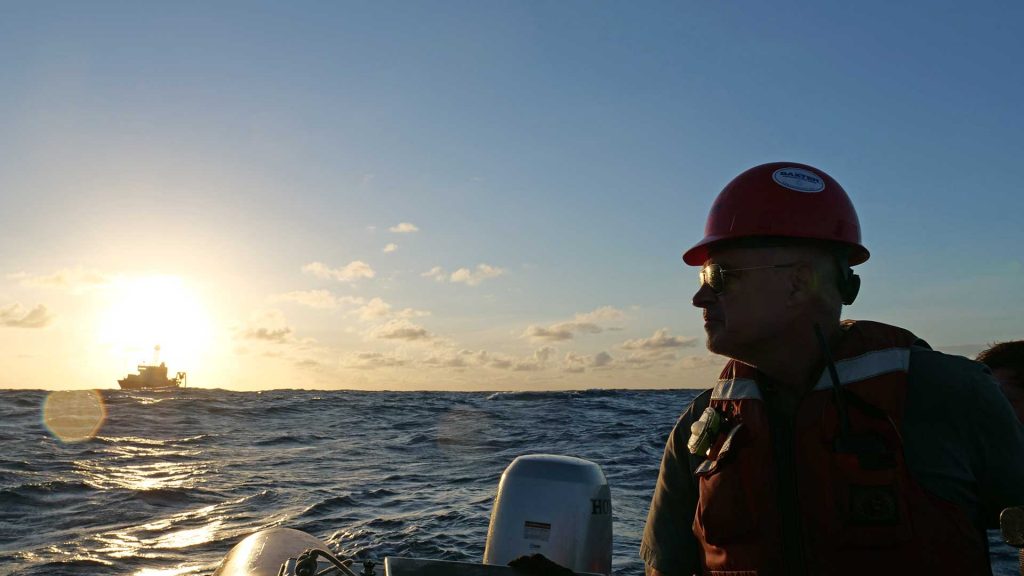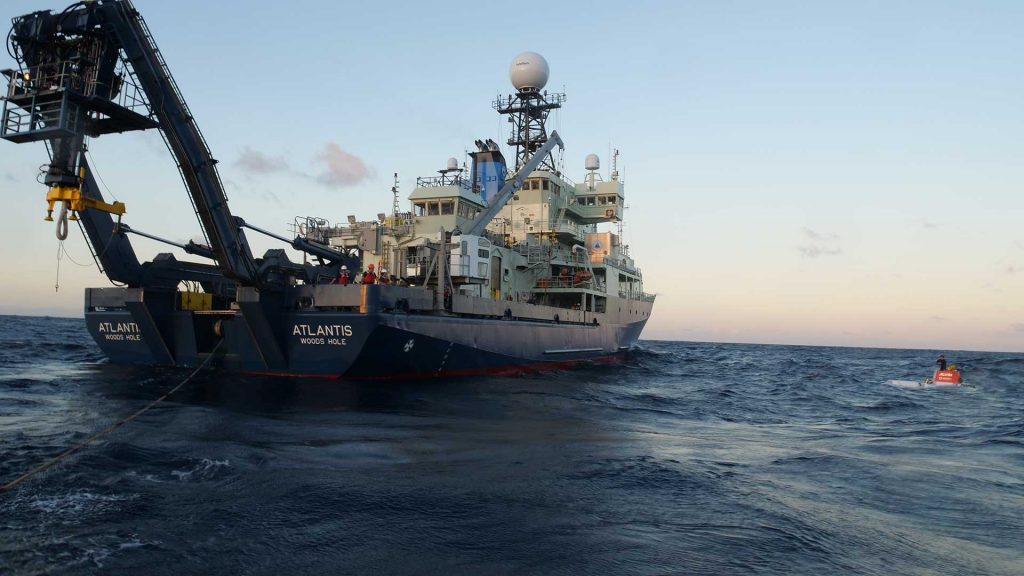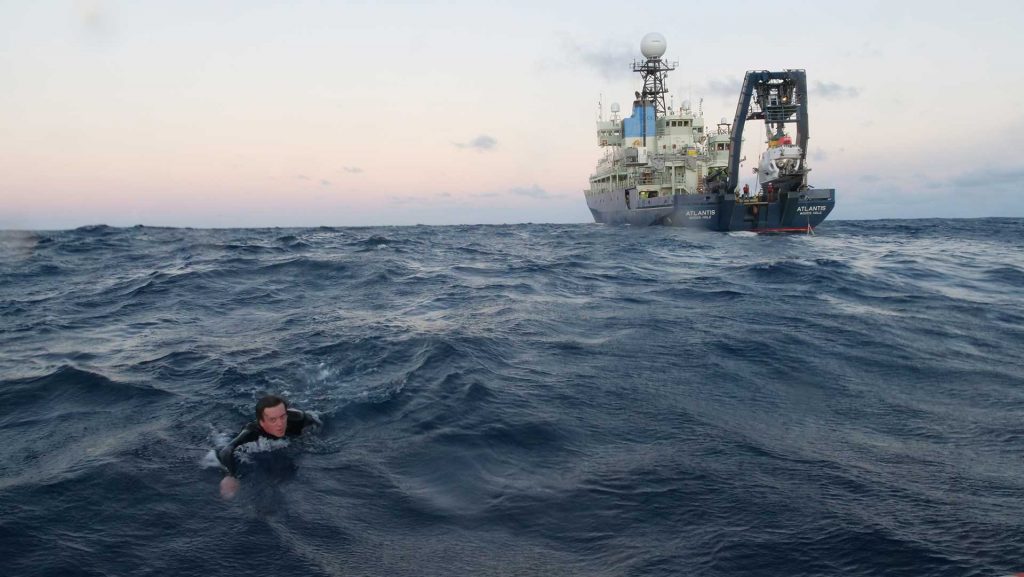Diving to Mona Canyon
The process of certifying Alvin to dive to 6500 meters doesn't mean the sub simply dives to its new maximum depth and that's it. We are required to move in a gradual and stepwise fashion from 500 meters to 6500, stopping at every 500-meter increment to do specific checks of the vehicle and log our data. Originally, that meant diving to each interval individually, but we later received approval to visit several depths in succession on a single dive.
We did that on November 5, with a dive that started at 500 meters and followed the bottom down to a depth of 1500 meters in a single day. The trick in planning a dive like that is to find an area of seafloor that is steep, but not too steep, that is free of obstacles (like seafloor cables), and that is within easy reach of the ship between Bermuda and Puerto Rico. Fortunately, Mona Canyon and the upper reaches of the Puerto Rico Trench (as its name implies) are near our eventual end point of San Juan, P.R.
Our dive in Mona Canyon began with the next interval after our last dive in Bermuda: 2000 meters. From there, pilot Mike Skowronski pointed the nose of the sub down about as far as he could and drove forward, staying about 100 meters above the seafloor for most of the dive. They didn't see much, but these dives are all about the sub's performance from an engineer's perspective-its science capabilities and finding interesting places to explore will come later. By the end of the day, Skowronski and his team made it to 3500 meters, setting up the next dive to take the sub below its previous maximum depth of 4500 meters for the first time-and possibly even deeper.

